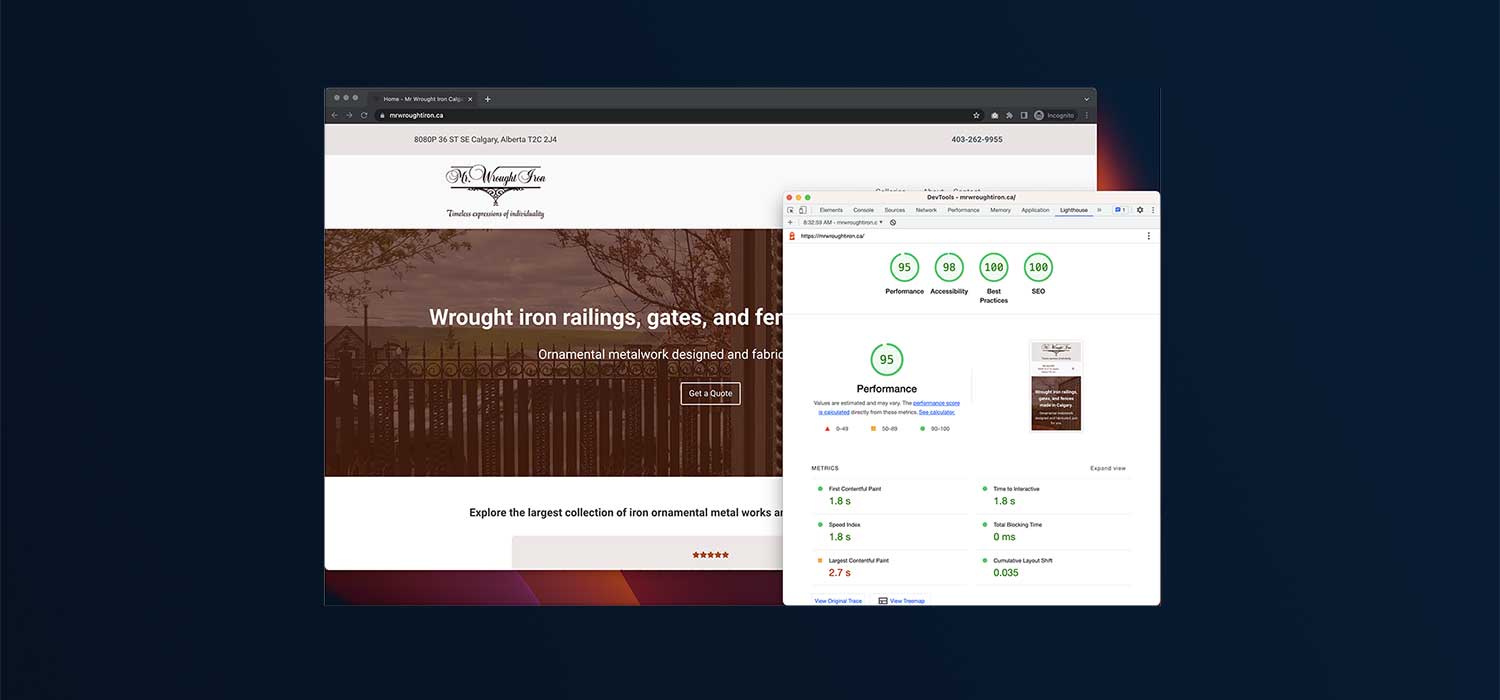Why do I absolutely need an SEO audit?
A website performs poorly because technology evolves and user skills vary. Search Engine Optimization (SEO) is the practice of ensuring your website loads quickly, clearly presents quality information, and guides your visitors to their desired outcome. Audit your website to assess how well it does these things:
- how fast it loads (technical quality: speed, security)
- how well it informs (user experience: ease of use, content quality/depth, aesthetics, clarity)
- how well it guides (persona flow: incorporating visitor intent)
You have the power to influence all three aspects of website performance. If you are just starting out, avoid making decisions that negatively impact your website’s quality. If you have an established website, there’s a very good chance you have some clean-up to do. Auditing your website is the first step.
Let’s review audit types:
1. A technical audit examines the quality of your website technology.
According to Nick Schäferhoff of WebsiteSetup, over half of the websites in use, today⌝ (1.2 billion websites) have been created on a content management system (CMS). Popular CMS platforms include WordPress, Wix, HubSpot, Weebly, GoDaddy Websites, Drupal, Squarespace, Shopify, etc. By far the most successful platform (so far) is WordPress with 455 million + websites. The rest are a collection of custom-coded websites (or apps) along with some small-scale creations.
Not all CMS platforms are the same. Some website platforms such as About.me⌝, are so specialized that they have just a few purpose-built functions, while WordPress can be customized with 60,000+ community-developed plugins and themes.
WordPress CMS customizations come about by adding third-party software to your website which is mostly developed under a free or freemium model by many different people around the world following varying standards. That said, it leads the pack for a very good reason: the developers that do the best work enjoy more installs, fewer complaints, and an opportunity to up-sell to paid tools.
A professional technical audit performs a software examination of 300+ technical aspects of your website from the quality of the code, to fundamentals such as typos. A technical audit report points out items for you to address, based on priority.
2. A user experience audit examines the presentation of your content.
User experience is a big topic. Nick Babich, Editor of UXPlanet wrote on the Adobe Blog, that “UX design is more than good usability“. The usability of a product’s design helps us understand whether users can complete tasks effectively and efficiently. It’s impossible to have good UX without good usability. However, usability is just one attribute of good UX. Usability helps us create well-functioning products, but the fact that a product is easy to use doesn’t guarantee that people will use it.

Further, Peter Morville’s UX honeycomb breaks down UX even further:
- Usable: A product needs to be simple, easy to use, and familiar.
- Useful: A product must fill a need. If the product isn’t filling a perceived gap in the users’ lives, then there is no real reason for them to use it.
- Desirable: The visual aesthetics of the product need to be attractive and evoke positive emotions.
- Findable: If the user has a problem with a product, they should be able to quickly find a solution.
- Accessible: The product or service needs to be accessible to everyone, including those with disabilities.
- Credible: The company and its products need to be trustworthy.
A professional UX Audit reports on refinements you can make to your content presentation to improve your visitor’s experience with your website. Best practices, common practices, and content quality are examined.
3. A persona flow audit helps you establish or refine the visitor journey
Also known as user flow, user journey, customer journey, or buyer’s journey, the concept is often confused with the sales funnel. A sales funnel essentially describes content marketing from a “funnel” perspective, where many people have presented an offer (top-of-the-funnel advertisement or other mass communication), from which a portion investigates additional details (middle of the funnel on-page content, download, etc), to a few that will buy the product or service (bottom of the funnel sales contact or purchase). In this sense, a funnel is not a journey.
A persona flow is visitor-centric, presenting information for discovery in such a way that the visitor chooses their own journey based on their personal intent and interest. It takes into account the visitor’s goals, over the business’s goals. From an audit perspective, it means assessing “who” each page is for, what its “purpose” is, and where it fits in the visitor’s journey.
Two easily recognizable visitor intents are to “purchase” and to “research”. Ask yourself, “will a buyer or a researcher read our About page, and why?” Or, “will a buyer or a researcher read my blog article and why?” Better yet, ask yourself what the most logical next step is for each, depending on the page they are reading. Now ask yourself what may happen if each visitor type finds what they are looking for. The buyer may make a purchase. But what might the researcher do? Maybe they’ll leave, having satisfied their curiosity. But maybe they’ll tell someone else about what they learned. Maybe, just maybe, they’ll become an advocate for your company. It’s underestimated how powerful a non-buyer can be.
While the vast majority of business websites are designed to help visitors “buy”, that’s not always the visitor’s goal. A professional user flow audit examines the way your content is linked based on individual visitor intent, giving you powerful insight into real business growth.







